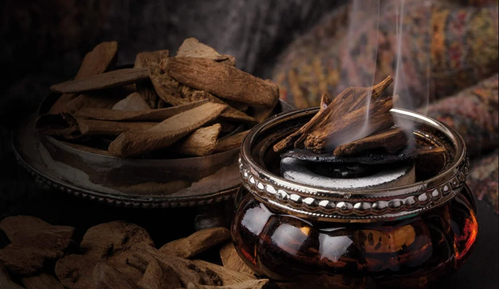
Oud vs. Bakhour: A Deep Dive into Arabia’s Most Sacred Scents
1. Introduction: Scents of the Ancients
For over 3,000 years, the smoky aroma of burning bakhour and the deep musk of oud have filled the palaces of kings, the halls of mosques, and the tents of Bedouins. These aren’t just fragrances—they’re cultural heirlooms.

Image 1: Ancient Arabian traders selling oud and incense along the Silk Road.
Caption: Oud and bakhour have been traded since antiquity, prized by civilizations from Mesopotamia to China.
2. Oud: The “Liquid Gold” of the East
Historical Roots
- Mentioned in the Bible and Sanskrit texts as aloeswood (Exodus 30:34, Charaka Samhita).
- Traded along the Silk Road—1 kg of oud = 1 kg of gold in medieval Arabia (UNESCO).
- Used in Islamic medicine: Ibn Sina (Avicenna) prescribed oud oil for depression in The Canon of Medicine.
Cultural Significance
- Symbol of status: Burned in royal courts (e.g., Queen Sheba gifted oud to King Solomon).
- Spiritual use: Believed to carry prayers to heaven; used in mosques during Ramadan.

Image 2: A 14th-century Persian manuscript showing oud distillation.
Caption: Ancient texts detail oud’s extraction process.
3. Bakhour: The Incense of Hospitality
Historical Roots
-
Originated in Yemen: The ancient Kingdom of Saba (Sheba) traded frankincense, a key bakhour ingredient.
-
Pre-Islamic rituals: Burned in pagan temples; later adopted into Islamic culture for cleansing spaces.
Cultural Significance
-
Weddings: Brides walk through bakhour smoke for purification (a tradition called "Al-Tehneel").
-
Daily life: Emirati households burn bakhour mornings/evenings to ward off the "evil eye."
-
Proverbs: "A home without bakhour is like a body without a soul" (Arabian saying).

Caption: Bakhour plays a central role in Arabian life ceremonies.
4. Key Differences: Oud vs. Bakhour
| Aspect | Oud | Bakhour |
|---|---|---|
| Form | Oil, wood chips, or perfume. | Blended incense (chips/powder). |
| Use | Worn on skin or burned sparingly. | Burned over charcoal. |
| Scent | Animalic, woody, intense. | Smoky, sweet (varies by blend). |
| Price | $$$$ (Wild oud = up to $100K/kg). | $$ (50 per box). |
| Occasions | Spiritual rituals, luxury gifts. | Daily use, weddings, hospitality. |
5. How to Use Them Together
The Arabian Ritual:
-
Burn bakhour to perfume the home.
-
Layer: Apply oud perfume, then wave clothes through bakhour smoke for longevity.
Fun Fact: In the Gulf, hosts often gift guests bakhour sachets dipped in oud oil—a double luxury.

Caption: Combining oud and bakhour creates a layered scent experience.
6. Conclusion: Two Sides of the Same Tradition
Oud and bakhour are more than scents—they’re cultural touchstones, weaving through history from ancient temples to modern perfume houses. At Mon oud, we honor this legacy with meticulously sourced ingredients.
Explore our collections:
Shop Bakhour
Discover Oud Perfumes

Image 6: Celebrate tradition with our curated oud and bakhour blends.
Discover More :


